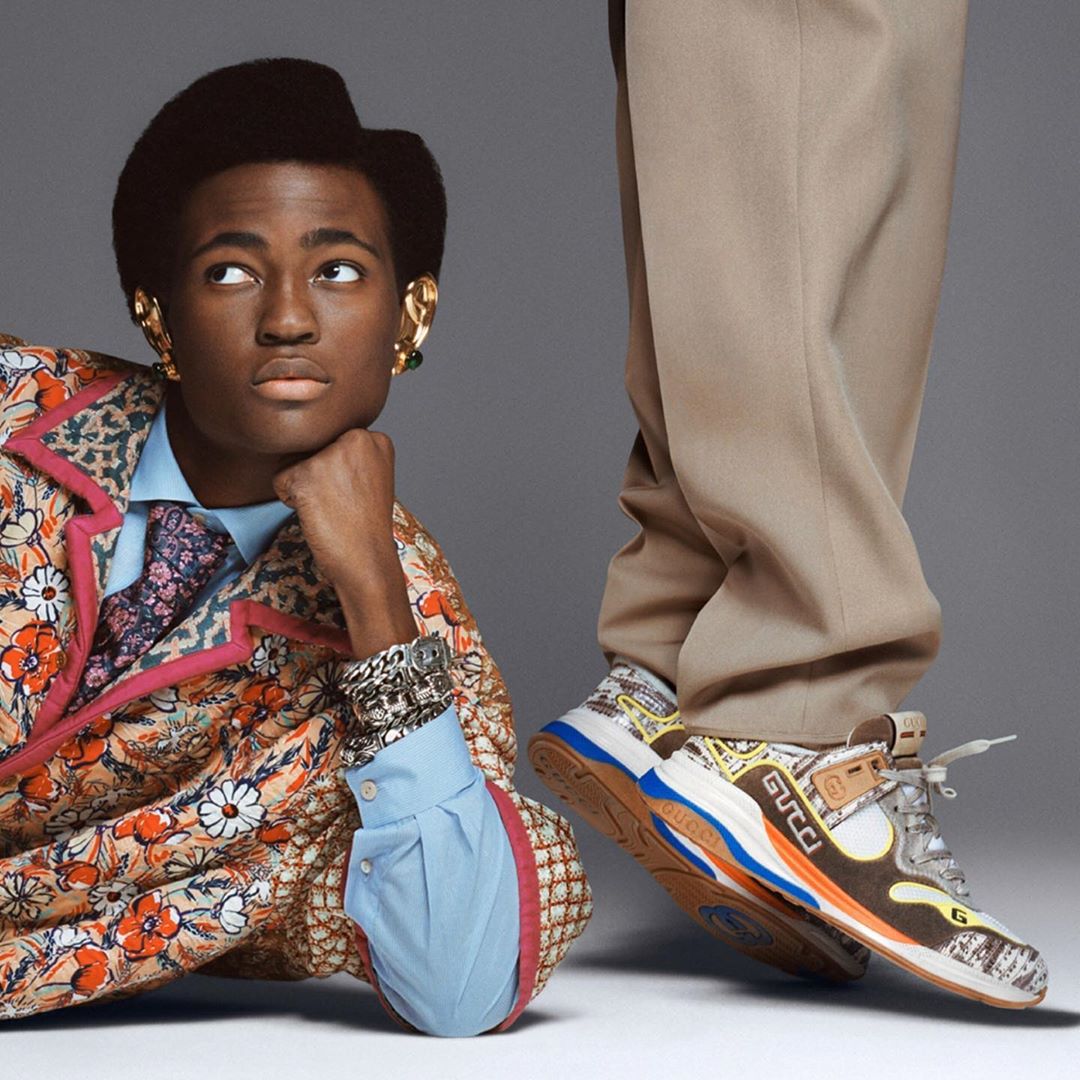News feed
The life of the fashion buyer seems a palpably glamorous one: front row at Fashion Week, friendly with the elite designers, fabulous parties, in nite champagne. Indeed, it can be. But below the surface, when the lights go down and the bar service stops, a tidal of orders, numbers and spend figures roll up. Or in some cases, down.
But what does it take to cut it as a respected – and successful – fashion buyer? First, you need to be able to forecast trends well before the consumer double-taps an Instagram post. You need an eye for art (of the sellable kind). You need a commercial sensibility and the aptitude to curate creatively. You need balls to take risks. Really, you just need to get the algorithms and the data right. Yes, the theatrical, fantastical world of fashion is a numbers game, after all, and your Balenciaga Phone Bag or Bottega Veneta Square-Toe Sandal all begins with the figure at the very top of the fashion food chain: the buyer.
Luxury online retail giants such as Net-a-Porter, Matches Fashion and Farfetch essentially sit as curatorial boutiques in this 3.53 trillion dollar world of e-commerce. Without the cost of bricks and mortar, they can house hundreds – even thousands – of brands, but the key is in the highly editorialised shopping experience each seek to serve. Here, meet the women behind your next purchase.
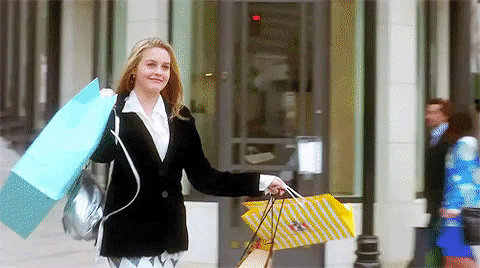
NET-A-PORTER
For almost 20 years, the Net-A-Porter purchase has been one of the original big-ticket digital experiences. Founded in 2000 by Natalie Massenet, Net-A-Porter came onto the fashion scene at a time when the concept of shopping high-end labels purely via the non-tangible world of the internet was unique. In fact, its lack of bricks and mortar was something that initially made investors hesitant. But, of course, as time went on, its business structure bore perfect sense for the modern world – and modern shopper – and it became a pioneer of the premium online shopping world. Massenet left the business in 2015 following a successful merger with Italian e-tailer YOOX Group, but the brand remains a foremost destination for the savvy designer shopper.
At its sartorial helm is Elizabeth von der Goltz, Net-a-Porter’s Global Buying Director. When steering the buying directive of arguably the world’s largest luxury retail ship, von der Goltz’s responsibility for being not only abreast of the latest trends but also a creator of them is both great and ever-growing. Luckily, she has an insatiable thirst for the next chic look, for cultivating new talent and for championing a more sustainable fashion future. Plus, her fixation on the facts and figures around the current retail climate perfectly complements the creative marketing niche she has crafted for herself.
“We go into each buy season armed with sales analysis, which helps inform the buy and direction of our business,” she explains. “Each collection is different from season to season, so even though we have a blueprint, it can change drastically with what the designers decide to show.” Enter the gut instinct, albeit the more fine-tuned, well-trained, commercially savvy version. “Here is where we, as buyers, take our years of knowledge as well as our gut instincts to make calculated risks on how to edit each collection and which styles and trends to back with conviction.”
Under von der Goltz’s guidance, Net-a-Porter’s offering is both plentiful and prestigious, but also offers off-kilter pieces that challenge the way we think and, more importantly, the way we dress. Initiatives like the Vanguard Program and NET Sustain are now pivotal pillars in setting the brand apart from its peers, something von der Goltz is actively shaping day by day. “Our sustainability strategy has an ultimate goal for every brand to have a certain percentage that is either completely sustainable or has an ‘X’ amount of sustainable practices,” she explains of the NET Sustain program. “I also think when you talk about that kind of dressed-up, sophisticated look, it includes a lot of investment pieces. All these beautiful coats and jackets are things that should last forever. We even just did a workshop within our company on how to make your wardrobe work harder. For example, if you had this amazing jacket, you note all the ways you could wear it again and again.”
For its Vanguard initiative, a global mentorship program that runs biannually and features four new designers in two seasonal blocks, securing the most exciting talent is imperative in the overall buying strategy. The scout of such designers is also significant, and this year the manhunt was a social one. All eight designers came from direct-to-consumer business discovered on Instagram only. A way of the future perhaps, but this new mode of scouting means von der Goltz has to keep her finger quite literally on the pulse. Beyond Vanguard, Net-a-Porter’s brand acquisition is even greater. “There are so many,” she says. “We picked up more than 100 brands for the high summer and fall. It’s been really exciting.”
There’s also the exclusive umbrella projects, which von der Goltz maintains are a valuable point of difference in the market. “In terms of our buying strategy, we are well-known for our big luxury brands, but also for differentiating ourselves in the market by creating exclusive umbrella projects such as Jet-A-Porter (a vacation- dedicated edit replete with extravagant in infuencer trips), The Vanguard and our Net-a-Porter collectives, which is what makes us unique,” she says. Indeed, the brand even convinced perennially exclusive designers Mary-Kate and Ashley Olsen of The Row to do a dedicated capsule collection hued in powdery chambray blue (a colourful sidestep from their painfully muted minimalism).
For von der Goltz, it all comes down to who the consumer is, and always will be, at the centre of any buy. “We always buy with our customer top of mind and are here to provide her with a global buy,” she says. “We have a global customer, who is a discerning and sophisticated cosmopolitan, elegant in their style and well-versed in luxury. We are constantly looking at ways to reinvent her wardrobe and keep her closet fresh.”
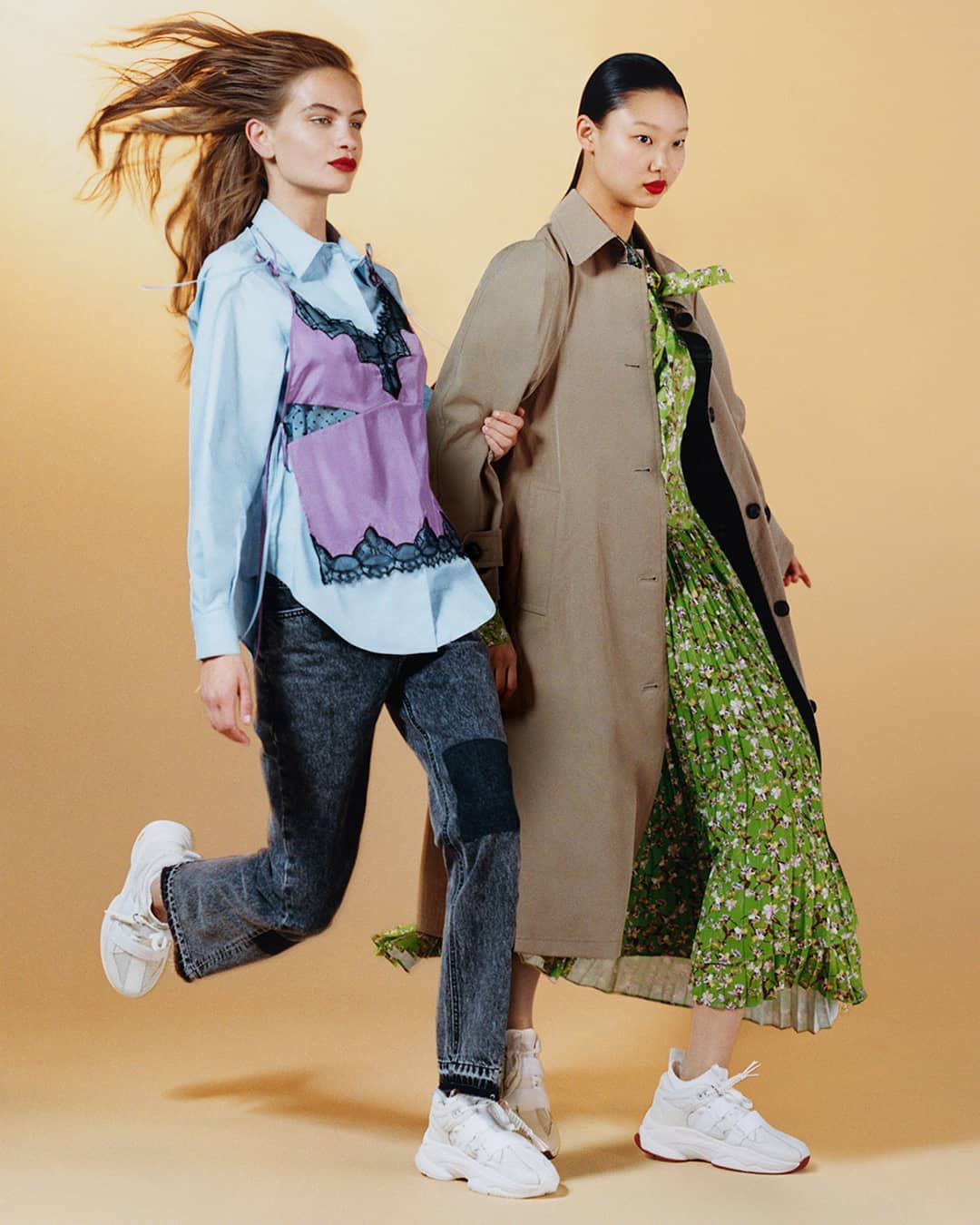
THE OUTNET
Interestingly, luxury discount e-tailer The Outnet has commonly been known in shopping discourse as the destination for Net-a- Porter’s sale stock; a kind of digital warehouse sale where last season’s designer wares would converge with all-new, reduced-price tags. In reality, it’s anything but. “In the beginning, over 90 per cent of the stock came from Net-a-Porter at the end of each season, but today this is the reverse and we now buy 90 per cent of our stock directly from the brands,” explains Buying and Merchandising Director Vikki Kavanagh. “We have moved on from those days… and don’t just accept past-season stock as our buying strategy.”
For an e-tailer that rose to fame in the shadows of its ashy, full-priced sister, it’s a surprising fact, and yet for any avid Net-a- Porter and Outnet scroll-ee, it makes sense. The buys look and feel inherently different. So how is their luxury so cheap? “We pride ourselves on having amazing relationships with the luxury designer brands that we stock, and we work with these brand partners on a multitude of levels,” says Kavanagh. “It’s through this we are able to offer exclusives for The Outnet customer as a key part of our product strategy,” which has seen bespoke capsules come to life with the likes of Oscar de la Renta, Roksanda and Ellery. While strong relationships are important, a buying strategy can’t solely rely on this, with Kavanagh adding it’s a multi-layered process. “We also place buys in showrooms at the same time as full-price retailers, taking the stock at the end of their full-price window. This allows us to be ultra competitive in terms of price and is exciting for our customer.” She’s right. How could one not get excited about Margiela or Marni or Miu Miu at 70 per cent off? In saying that, this doesn’t mean The Outnet woman doesn’t like to spend. “We know that our customer is incredibly fashion aware and likes to remain informed about her favourite go-to designer. The most expensive item we have ever sold was an $18,000 Demi-couture dress from Dolce & Gabbana!”
Kavanagh is quick to point out that The Outnet customer is not one who bows to peer pressure or capricious trends, rather, “she is con dent in her style and does not feel pressured to buy ‘It’ items.” She’s also not afraid to buy out of season, supporting the circular economy and giving past-season products a lifeline. And with season-less fashion fast becoming the norm (thanks to an influx of irreverent direct-to-consumer models that both baulk and buck season trends), The Outnet’s model is perhaps even more relevant today than, say, five years ago, when fashion still remained governed by strict seasonal codes. “She loves to purchase both current and past-season rather than being driven by discount,” adds Kavanagh. After all, $18,000 is not necessarily “cheap” – even if it is couture.
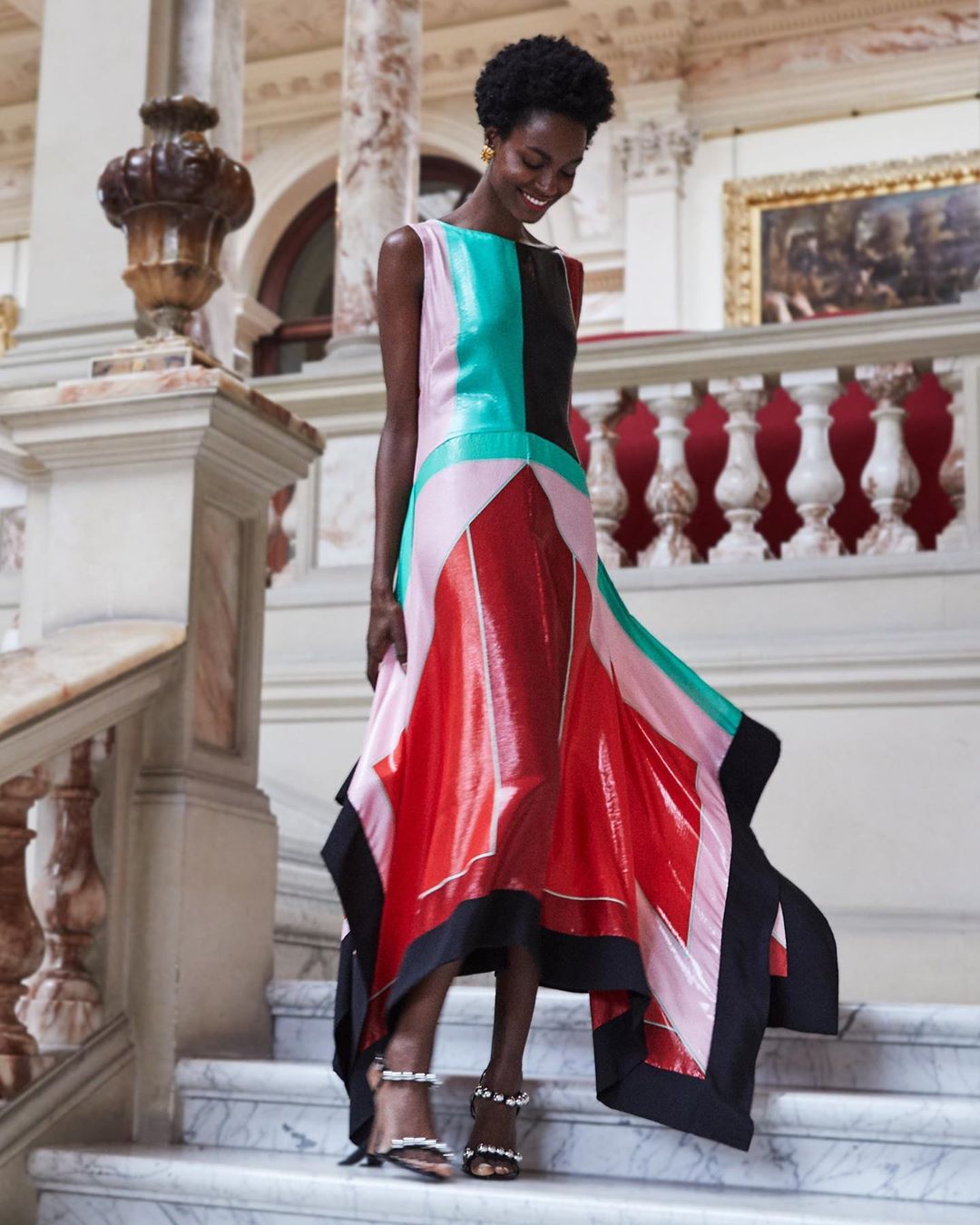
MATCHES FASHION
London’s luxury retail bedfellows Matches Fashion has a different buying mechanism. “We actually encourage our whole business to think of our ‘Matches women’ as six different muses in not just the way we buy but also how we speak to her,” explains Fashion and Buying Director Natalie Kingham. “Each of the muses has their own DNA in terms of style and brand preference, but these can evolve from season to season and we like to think our woman can even change from one to the next from day to day.” Meaning the “Fashion Pioneer” can become a “Purist” with just one click (most likely on The Row or Gabriela Hearst). With this diverse albeit fluid muse at its core, Kingham contends the entire Matches buy centres around her and her journey on site. “We are constantly thinking about her – what is her lifestyle, what pieces will she find exciting and how can we engage with her so she feels like she is a part of a journey of discovery when it comes to our brands.”
Of course, there’s also the buy itself, a point of difference that Kingham believes comes down to the curation of the Matches edit. “We are always looking to surprise our customer and introduce them to something new,” she says. “We pride ourselves on working with a wide mix of brands – both established and emerging.”
Emerging talent is another cornerstone of the buying strategy; its Innovators program welcomes and celebrates the fashion mis ts of the world, essentially those who don’t conform to conventional design structures and run their own creative race. “The Innovators is something we launched almost five seasons ago as a platform for championing designers who didn’t necessarily t within the traditional fashion cycle,” says Kingham. “Either they didn’t work on seasonal collections, or were taking new approaches to design through sustainable sourcing or via a couture-like approach to their designs,” a kind of out-of-the-box philosophy that both shapes the buy and the overall designer collective of the site.
This season, however, Matches favoured inventive business savvy with a focus on direct-to-consumer designers. “We have been focusing on designers who have been more innovative in their business approach by building incredibly successful brands through a direct-to-consumer model,” she says. “It’s a program that recently saw the likes of Australian conceptual composite Wardrobe.NYC and Instagram-made brand Rat & Boa find their first retail home outside the comfort of their own. But perhaps most interesting is the retailer’s artisanal approach, which also impacts the buy. Among its peers, Matches’ palpable point of difference is its strong art and design sensibility; a leaning that actually drives both the womenswear and menswear categories and something Kingham says comes directly from the consumer. “Our relationship with art and design is quite a natural partnership for us,” she says. “We find our customer is incredibly engaged with art and is inspired by many things in this world, which impacts how they want to dress and decorate their home.”
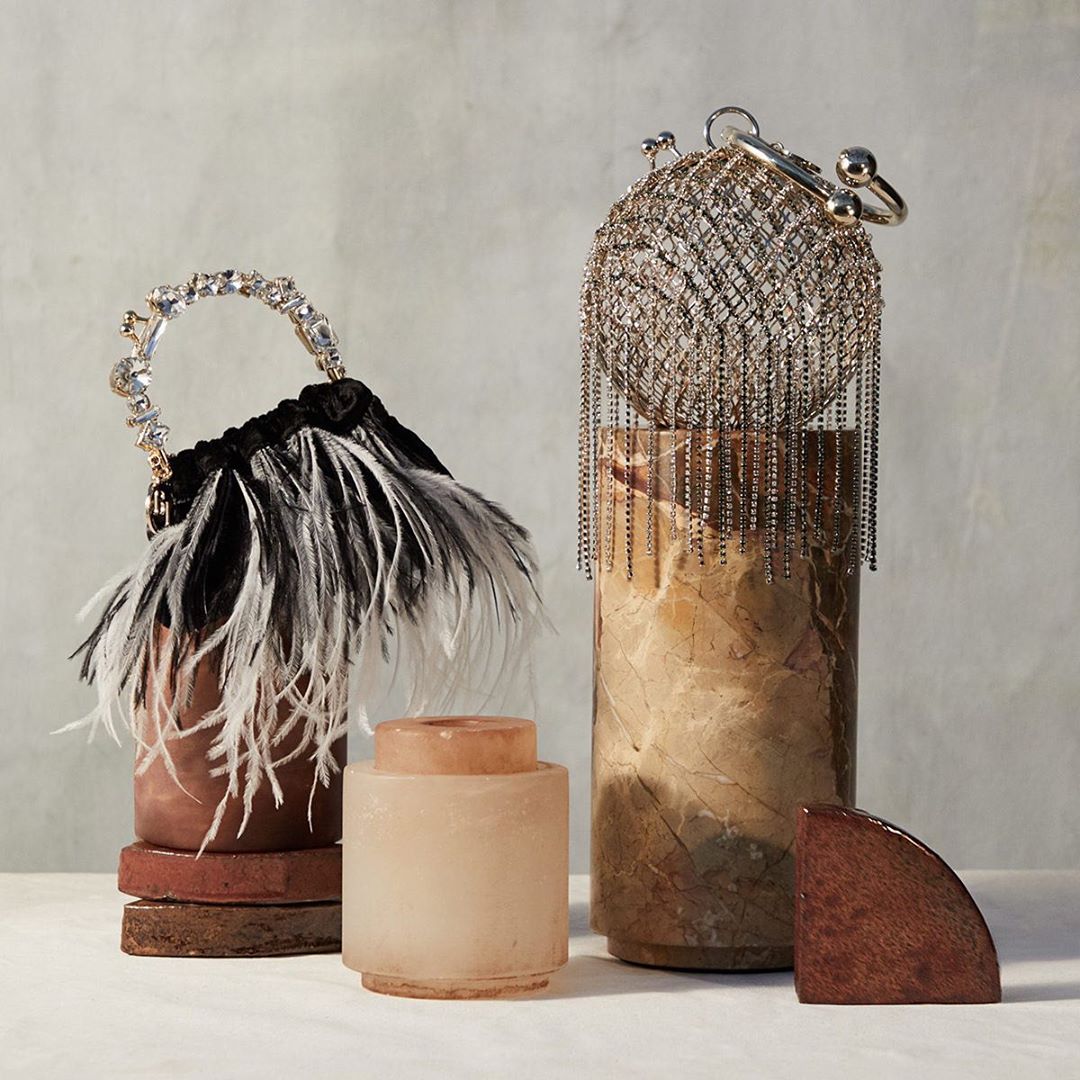
MODA OPERANDI
Across the pond, New York-based e-commerce site Moda Operandi works on a slightly different model: the trunkshow. Founder Lauren Santo Domingo tapped the now-culture of consumerism with a runway-to-cart model where entire ready-to-wear collections basically springboard off the catwalk and onto Moda faster than you can say ‘add to cart’. Meaning? Jacquemus’s lavender-soaked Spring 2020 collection, for example, could be purchased less than 72 hours later, the genderless taffy pink suits and micro, micro minaudières available on the website as soon as the designer moved his wares from the heady lilac plateau of the South to his showroom in Paris.
For its Fashion Director, Lisa Aiken, Moda’s unique trunkshow is ultimately a form of money-can’t-buy marketing. “Through Moda Operandi’s trunkshow model, we are able to predict what customers will gravitate towards next season through data,” Aiken says. “Moda is willing to take risks informed with this data that other stores could not. We are able to provide fashion-forward pieces that may have never made a shop floor.” While the model acts as the ultimate crystal ball, the whole trunkshow system is actually deeply rooted in fashion’s past; an homage to the history of couturiers who showcased their creations to elite clientele in trunks, a practice Santo Domingo honed for the modern day. It’s a unique format in the digital retail space, Moda Operandi the only retailer to offer clients such access, and one that arms their consumer with the most exclusive and up-to-date pieces. For the clannish, fussy fashion folk, this format is particularly successful. “Our customers are very con dent with their decisions and know what they want,” says Santo Domingo. “Ultimately, she can get anything through trunkshow since she has access to shop the full runway collection.”
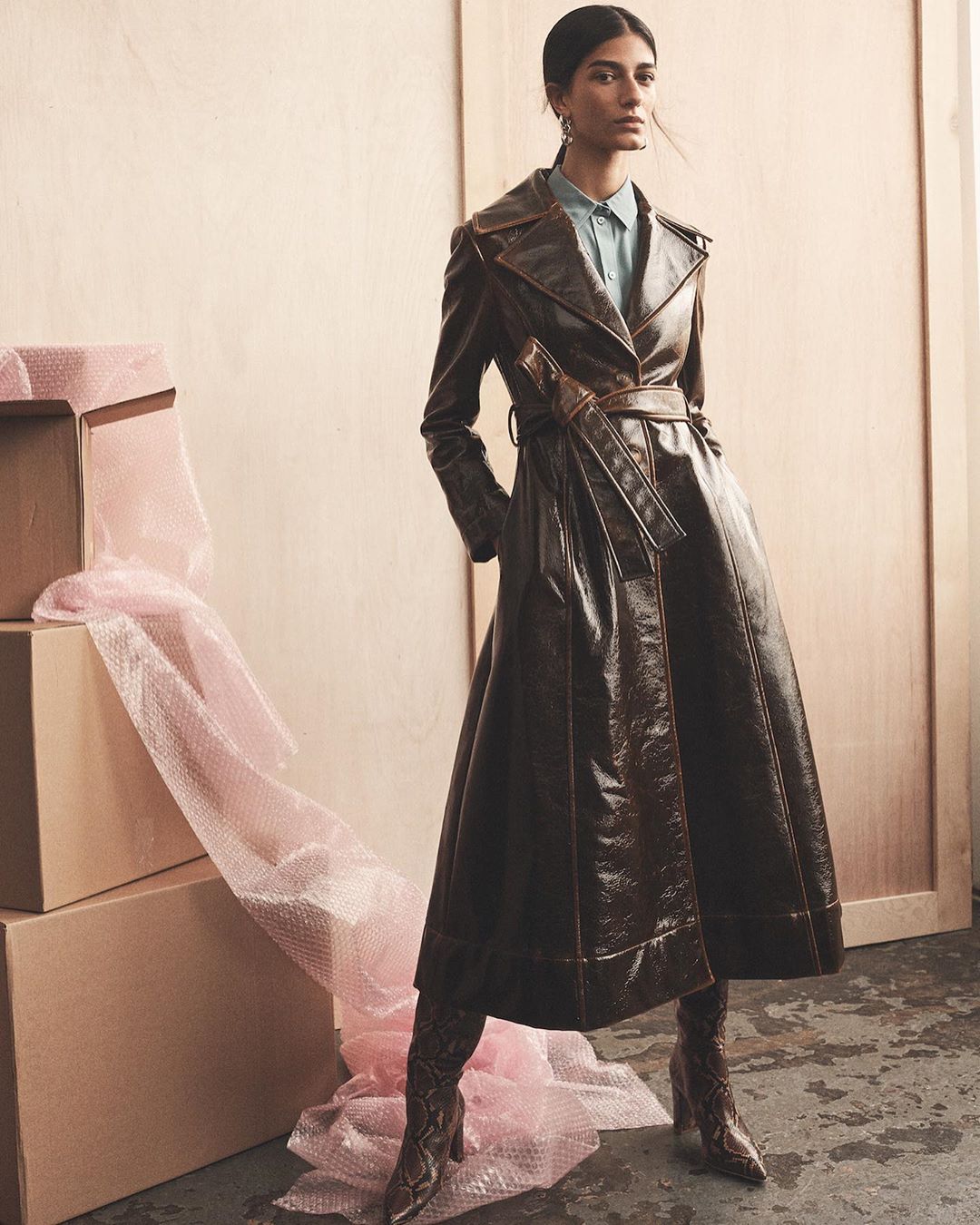
FARFETCH
Farfetch, again, runs on entirely different buying structures. It positions itself in the market as a kind of digital disruptor, a platform that partners with more than 1000 independent boutiques and key luxury brands globally in one all-encompassing, Herculean hub of style. Basically, it’s a gateway to luxury fashion rather than a house, something Senior Womenswear Editor Celenie Laura Fleur Seidel says sets them apart. “Farfetch is super unique in that it is truly a global platform rather than a traditional online retailer,” says Seidel. “It collectively brings together an exciting and extensive range of product for the Farfetch customer to shop.”
For Seidel, diversity in the buy is key. “As we have so much product to offer, it means we’re able to cater to a range of women with varying tastes: whether they’re mad for streetwear and come to Farfetch for collectable Stadium Goods, or they’re super classic and their wishlist is full of Lemaire and The Row, or they can’t resist a bit of romance and fill their basket with Simone Rocha,” she says. It’s exactly this that makes it so paradoxically appealing, even fascinating; a stylish one-stop shop that caters for the eccentric eclectics to the haughty high-brow, fashionably codified in the extreme.
This all ties back to the strong sense of community, who from the outset engineered a global community that creates, edits and showcases the pieces in an entirely new light. “Our editorial on Farfetch.com allows customers to shop selects and edits chosen by the global Farfetch community, sharing inspiration from around the world,” says Seidel proudly. It’s this community-driven content that brings to life Farfetch’s unrivalled range of luxury fashion, which pivots from iconic brands to emerging design talent and all that’s in between. But editorialising the buy is all part of the strategy, something Farfetch illustrates not so much through influencers with millions of followers, but rather via cool, interesting people about town. Seeing Gucci’s rainbow-logo Rhyton sneaker on London-based DJ Coucou Chloe in a graffiti-stained carpark, for example, is far more engaging than seeing it deep etched on a white screen. It’s something Seidel and her team pride themselves on, actively shooting their own editorials geared at educating the Farfech audience on new key trends through a visual language that is both powerful and relatable.
As for the case of sustainability and the subsequently shifting habits of the consumer, Farfetch boasts a dedicated vintage section: Pre-Owned. “Farfetch has a great range of pre-owned items from luxury fashion houses and we partner with the most amazing boutiques globally who are specialists in this area, meaning that we have curated an unrivalled range of very special pieces for our customers to explore,” says Seidel. It’s true – there’s everything from retro Chanel twin sets to prized Hermès Birkins, which interestingly sit alongside the vanguard of contemporary cool. But being positively conscious is important to the brand, with Seidel citing circular fashion as key in the broader social fabric. “Socially, I feel there is a noticeable shift in consumers thinking about what we’re purchasing and how frequently,” she observes. “Investment buying is something that a broader range of people are taking much more of an interest in, as well as circular fashion.” As for what to get excited about for the season ahead? “A new, happier version of grunge; a modern iteration of’70s bourgeois; Dynasty-esque power glamour and a strong eclectic aesthetic for the eccentrics out there.” Bring on the fashion.
